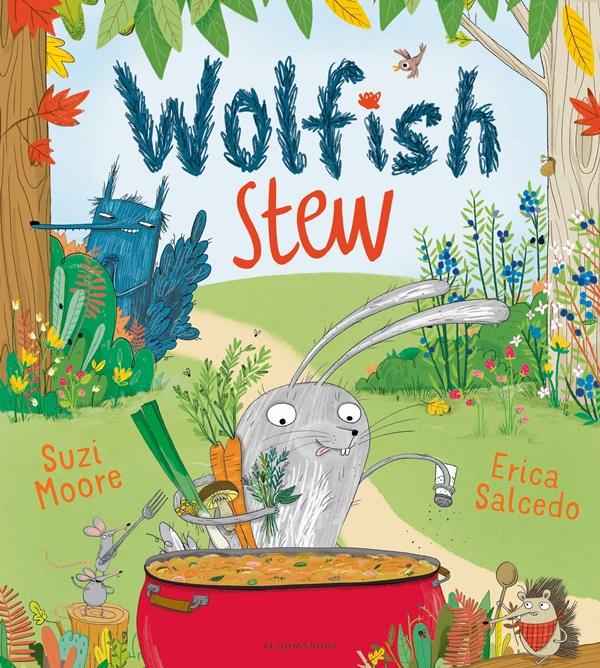
Suzi Moore (text), Erica Salcedo (illus.), Wolfish Stew, Bloomsbury/Allen & Unwin, July 2016, 32pp., $14.99 (pbk), ISBN: 9781408844953
Wolfish Stew is a delightful collaboration between author and illustrator. It’s a fresh take on an oft-visited picture book topic, a crafty wolf chasing his innocent prey, here a rabbit named Grey. He is on his way through the forest, a place populated with charming animal onlookers, but must be careful to watch out for Blue, the sneaky wolf! This book cleverly subverts the traditional narrative with a surprising ending that will tickle readers.
Young readers will take great enjoyment in reading along with Moore’s sing-song rhymes, while also experiencing the growing tension of the wolf stalking his prey. The energy of the language and the predictable rhythmic repetition will mean this book is one that readers will enjoy revisiting and rereading.
Salcedo’s bright illustrations fill the forest world with quirky inhabitants, and funny details to discover. Each page offers up details such as finding that the wolf owns a book called Top Wolf Chef, the many arrows to follow and underground lairs to investigate further.
Older readers could use this book as an example of an author taking a traditional narrative and playing with the reader’s expectations by twisting the ending. In what other ways could the author surprise readers? Could the wolf and rabbit fall in love? Could the rabbit call the Forest Police and have the wolf arrested for stalking?
Wolfish Stew sits nicely alongside traditional fairytales such as Red Riding Hood and The Three Little Pigs, and even more contemporary picture books such as the Australian Wombat Stew. Students could explore how the authors and illustrators portray wolves (and dingoes) as bad or evil characters. Here, Moore describes the wolf as cunning, sneaky and mean, and Salcedo gives him devious expressions and sly looks. Together, they are presenting him as a character who is not to be trusted. What a wonderful chance to work with students to create a similarly evil character, or to flip this character and give a wolf a different persona. Creating a wolf with a heart of gold would surprise and engage readers, and help students to understand the power of disrupting conventional narratives, just as Moore has done with her wily bunny rabbit.
Reviewed by Madeleine Crofts
